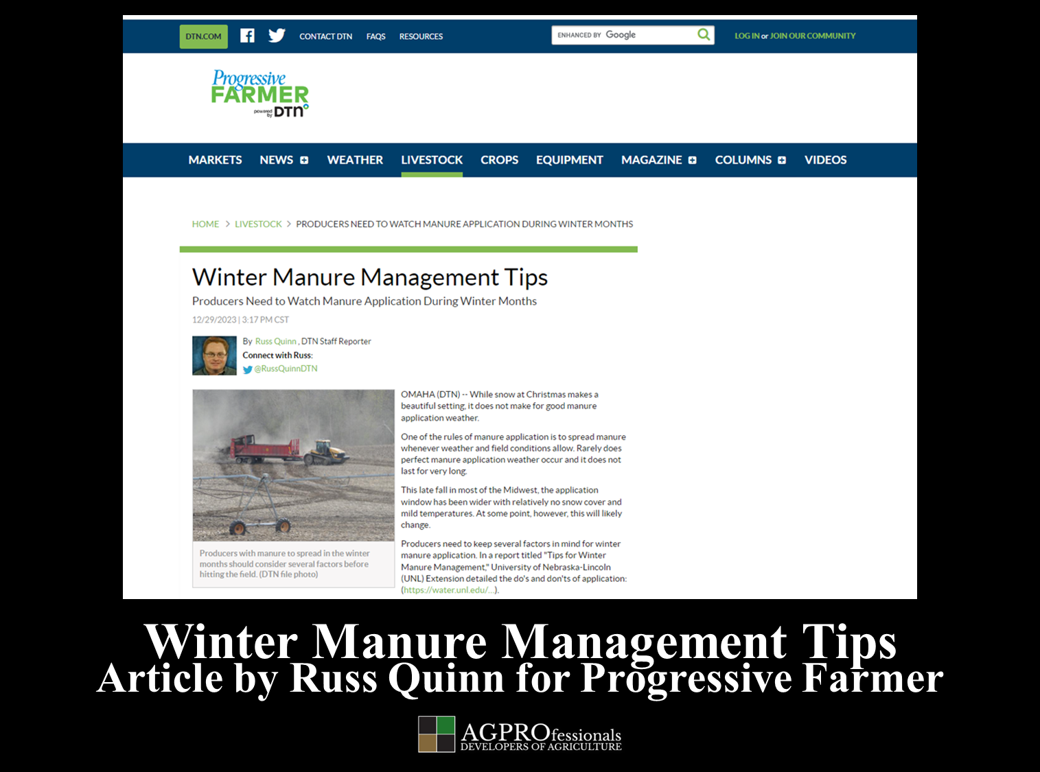Winter Manure Management Tips
Article by Progressive Farmer reporting information provided by the University of Nebraska-Lincoln
Highlights:
Factors To Consider
Producers need to test their soil and manure nutrient concentrations to guide their decisions on where manure should be applied. If possible, avoid applying manure on fields with slopes, as this land presents a greater risk for erosion and runoff.
Try to apply manure on ground with at least 30% crop residue cover as this reduces the chances of manure runoff during heavy rains and snowmelt. Another consideration would be to apply manure on coarse-textured soils as fine-textured soils have more infiltration rates and reduce the risk for nutrient runoff losses.
In general, manure application should be avoided when fields are snow-covered. If manure must be applied then or when the soil is frozen, it is critical to recognize the runoff risk associated with solid versus liquid manures before making application decisions.
Different Manure, Different Rules
For liquid manure, it is not recommended to make an application to soil frozen beyond the top layer as this poses a high risk of nutrient loss through runoff. However, if conditions cause soil to freeze overnight and thaw during the day, application will likely create little risk for runoff.
Producers should watch the application field so the application can be discontinued if runoff does happen, according to the UNL report.
For solid manures, application to frozen soils can likely be done with little risk of runoff when precipitation is not predicted and the rules of where to apply manure are followed.
With either type of manure application, producers are encouraged to monitor the 10-day weather forecast and avoid applying manure before possible major precipitation events to avoid potential nutrient runoff. Avoid manure application for at least 24 hours before a forecasted precipitation event -- or even longer if possible.
Manure application should never exceed the needs of the crops and soils receiving them, regardless of the time of year. Again, sampling and testing soils and manure sources to determine the maximum rate of manure needed is recommended.
Link to the complete article HERE

